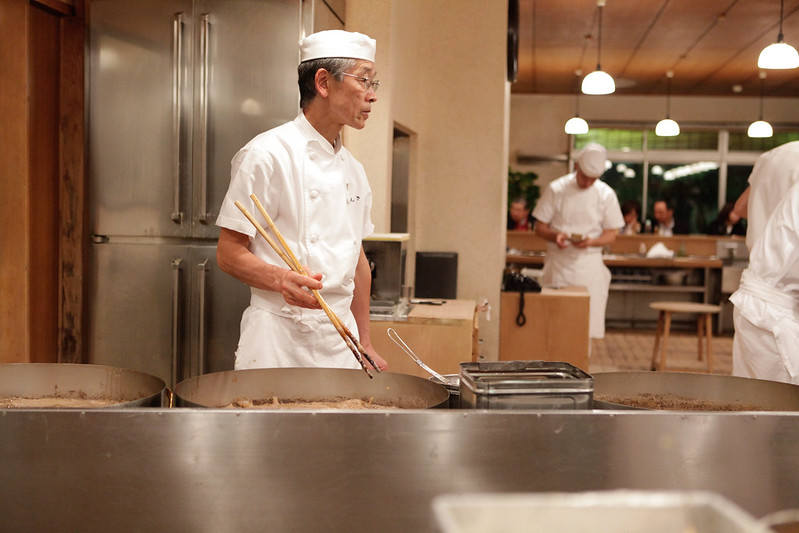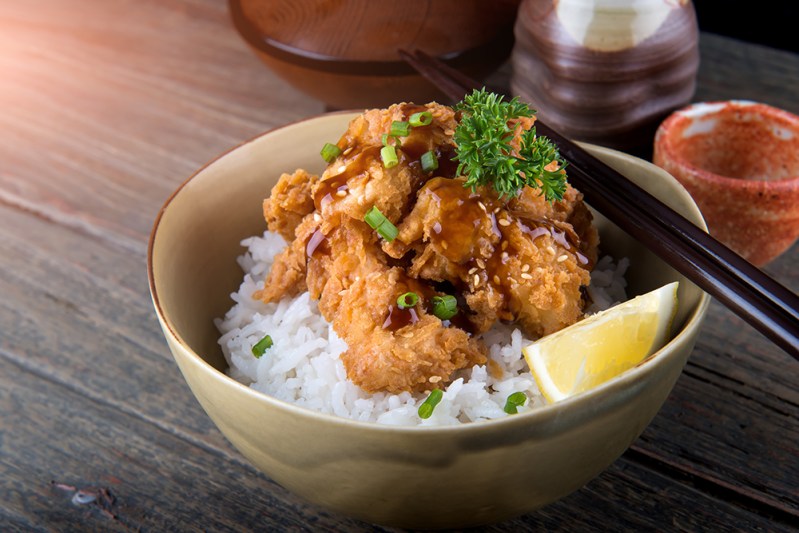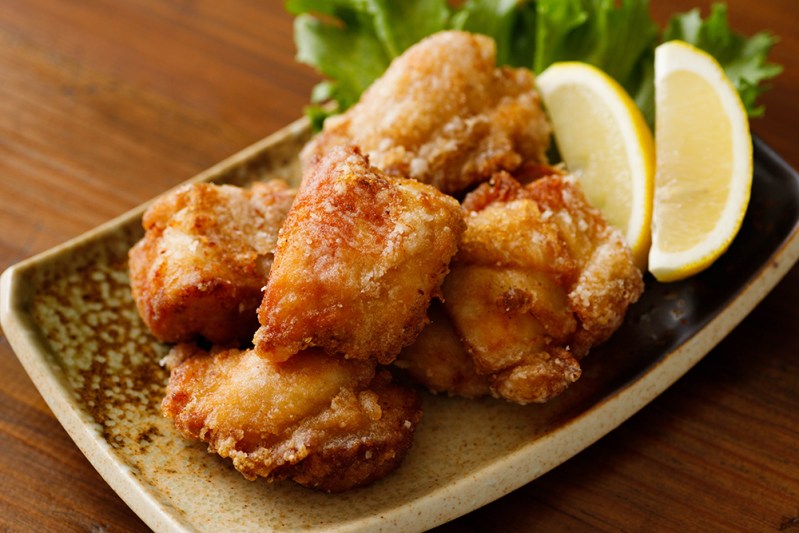There are countless variations of fried chicken beloved around the world. Japan is no different. Known as karaage, Japanese style fried chicken is ubiquitous in the country, found everywhere from school lunches to hole-in-the-wall izayaka pubs.
Boneless and marinated, karaage is a relatively modern culinary creation. Traditionally, the Japanese ate little animal protein due to the adoption of Buddhist vegetarian beliefs from China. The technique of deep frying was also foreign, introduced by the Portuguese in the 16th century. Karaage first appeared after World War II and grew in popularity due to changing diets and increased meat consumption.
The word karaage refers to the Japanese cooking technique of deep frying, although the term has now become interchangeable with fried chicken itself. There are many regional variations of Japanese fried chicken, such as sweet tebasaki wings from Nagoya, tartar sauce-covered Chicken Nanban chicken from Miyazaki, and toriten (chicken tempura) served with ponzu and hot mustard from Ōita. For the purposes of this guide, we will focus on karaage, the most common version of Japanese fried chicken.
Japanese Fried Chicken (Karaage)
(By Chef Christina Jackson, former chef at Masa, currently the head chef of Edith’s Brooklyn.)
Ingredients:
- 1 1/2 pounds of chicken thighs
- 1/2 tsp salt
- 1/2 tsp black pepper
- 1/2 tsp grated ginger
- 1/2 tsp grated garlic
- 1/2 tbsp yuzu juice, or lemon juice if unavailable
- 2 tsp soy sauce
- 2 tsp cooking sake
- 2 tsp mirin
- 2 tsp honey
- 1 tsp light sesame oil
- 2 tbsp potato starch
- 2 tbsp flour
- 4 cups vegetable, canola or rice bran oil
Method:
- Cut chicken thighs into 2-inch pieces and season with salt and pepper.
- In a bowl, combine grated ginger, grated garlic, yuzu juice, soy sauce, sake, honey, and sesame oil.
- Add chicken to the bowl and coat evenly. Cover and place in refrigerator to marinate for 30 minutes.
- While the chicken is marinating, pour oil into a pot, cast iron pan or Dutch oven. Heat the oil to 325 degrees Fahrenheit.
- Place potato starch and all-purpose flour in two separate bowls.
- Take the chicken out of the marinade and dredge first in flour and then in potato starch. Remove excess with a sieve or mesh colander.
- Heat oil to 325 F. Once it reaches temperature, add chicken, about 3-5 pieces at a time. Be careful not to overcrowd the pan.
- Important to note: This is the first fry. Do not cook the chicken completely.
- Deep fry for two minutes or until the outside is a light golden brown. If the chicken is too dark, lower the temperature. Transfer chicken to a wire rack when finished.
- Bring the oil temperature up to 350F. Fry chicken again for 1 minute or until skin is a nice, deep golden color. If desired, use a cake tester or meat thermometer to check for doneness.
- Serve with a wedge of lemon, pickles, and kewpie mayo (add some shichimi togarashi for a spicy kick).
Choosing the Chicken
Most karaage recipes will use thigh meat. Dark meat is preferred in Japan as it’s seen as more flavorful and less prone to drying out. Karaage is always boneless and many recipes will also leave the skin on for flavor. Karaage is meant to be relatively bite-sized, so it’s best to cut a typical chicken thigh into two or four pieces.
The Frying

Japanese karaage is often less greasy than American fried chicken. This is due to the sake in the marinade and the different dredging ingredients than American fried chicken. Alcohol like sake is used in Japanese meat preparations to remove any potential gaminess or odor (similar to the concept of citrus with seafood). Karaage dredges frequently include potato or corn starch which produce a lighter crust than pure wheat flour.
Sauces
Unlike Korean fried chicken, karaage is not commonly coated in sauce. The most common sauce is Japanese mayonnaise or some lemon wedges. Japanese mayonnaise (such Kewpie brand) is smoother and richer than American mayonnaise. For a spicy variation, squeeze hot sauce or sprinkle shichimi togarashi (a Japanese chili pepper mix) into the mayonnaise.
Accompaniments

Japanese fried chicken is most often served as part of a “set” meal, complete with rice, soup, salad, and pickles. Karaage in Japan is also commonly found in Chinese restaurants. The flavors and techniques of Japanese fried chicken — garlic and deep frying —are Chinese in origin, brought to Japan by Chinese migrants. Since ramen was also introduced to Japan by Chinese immigrants, it’s not uncommon to find karaage served alongside ramen or fried rice (a staple in many ramen and Chinese restaurants in Japan).




